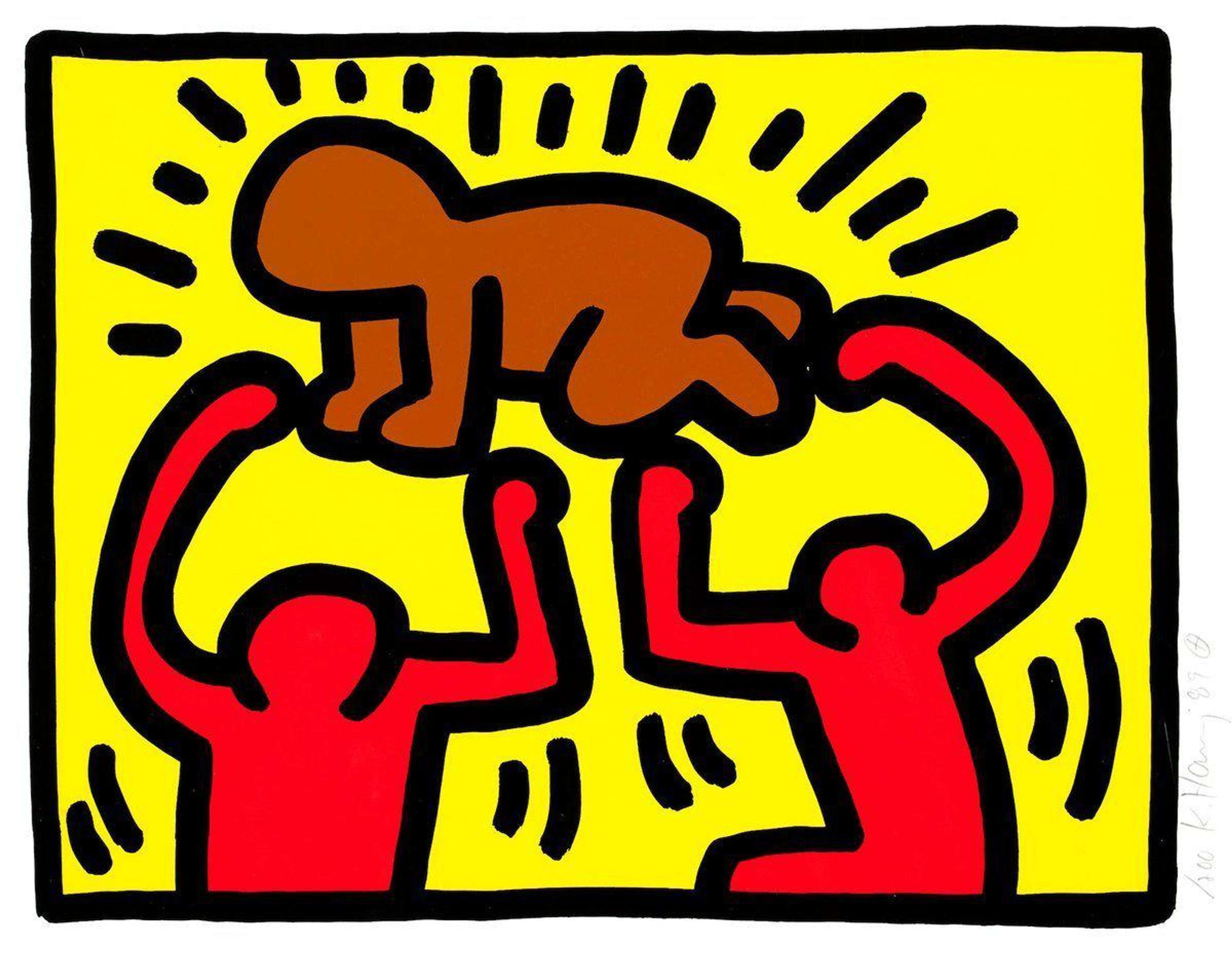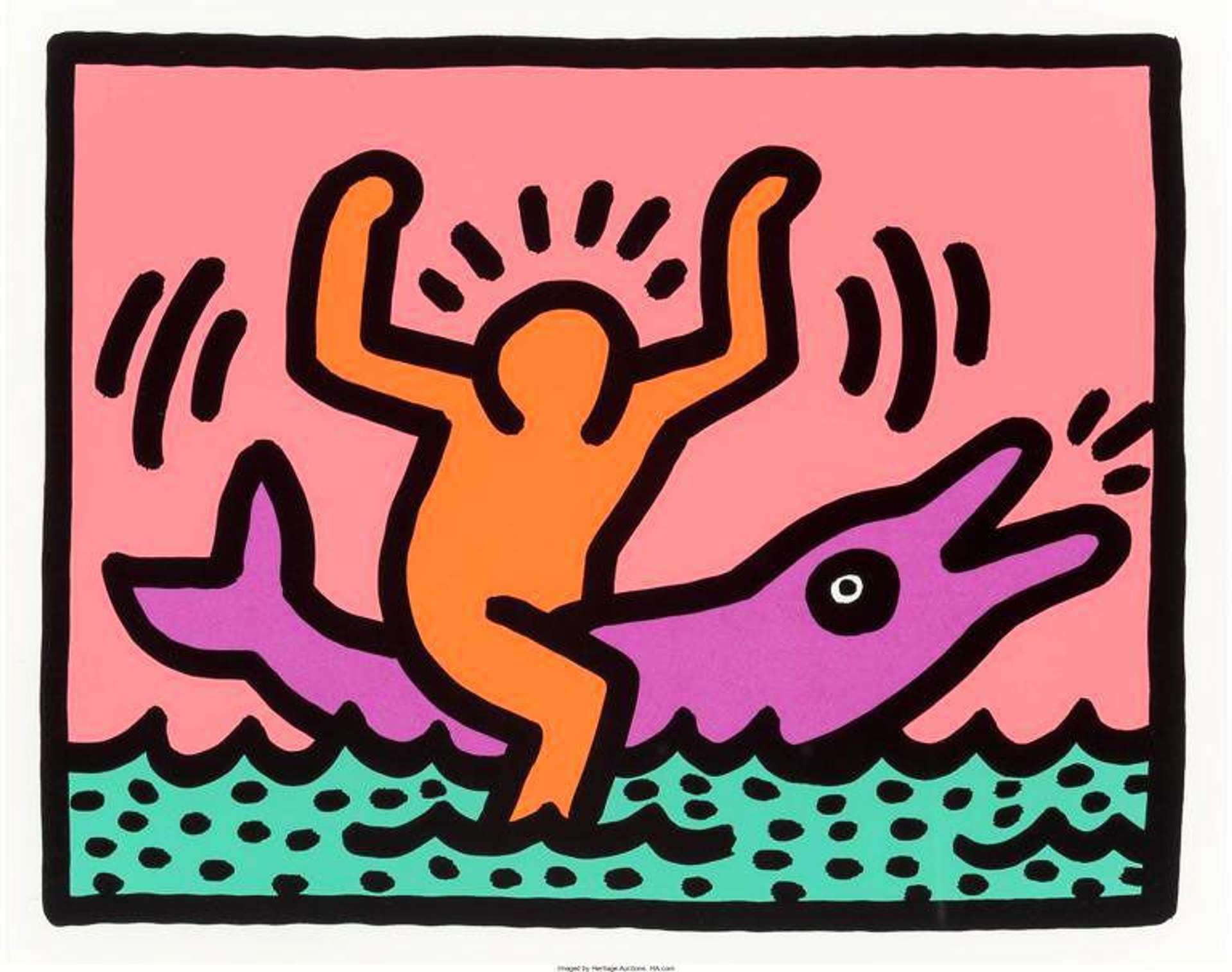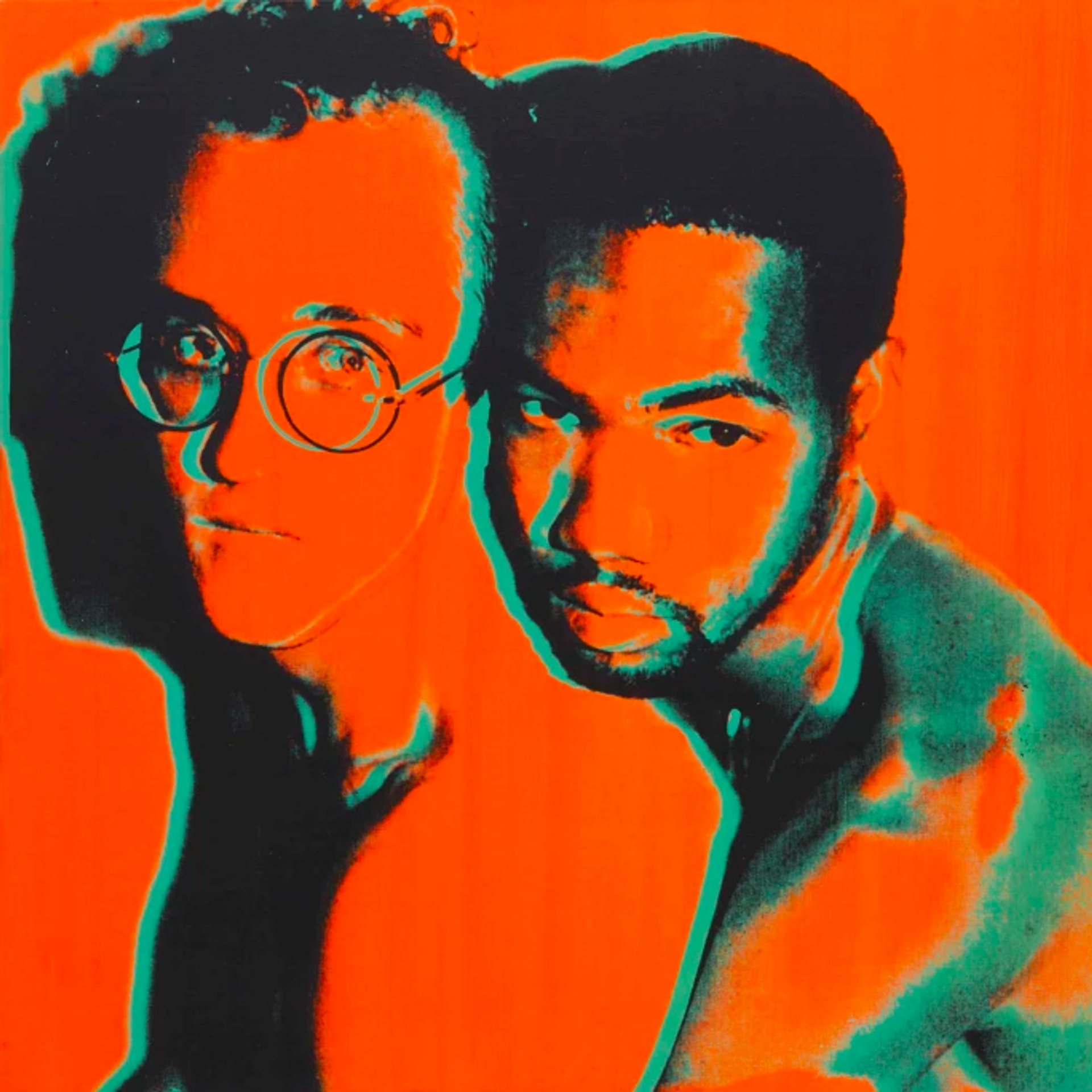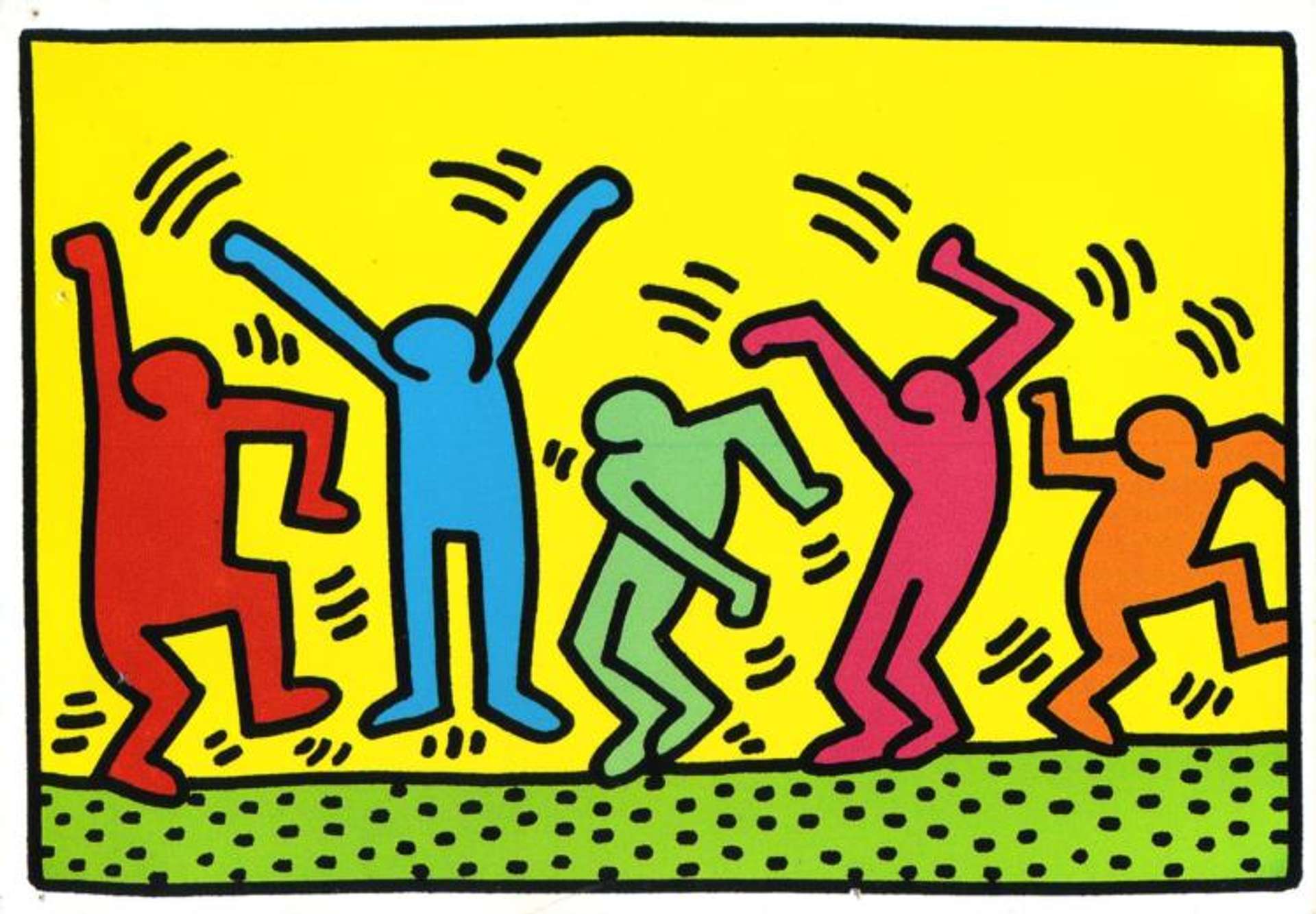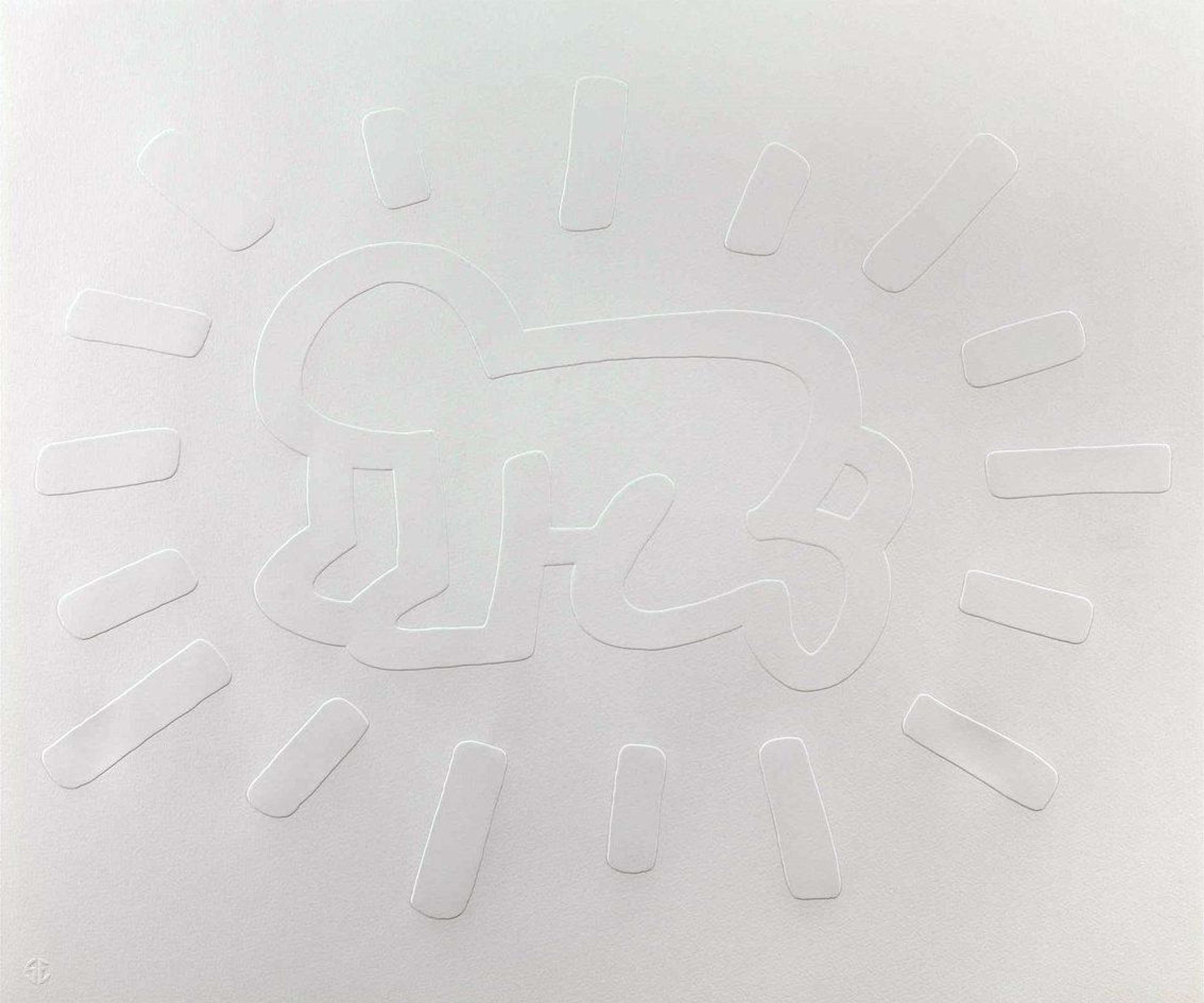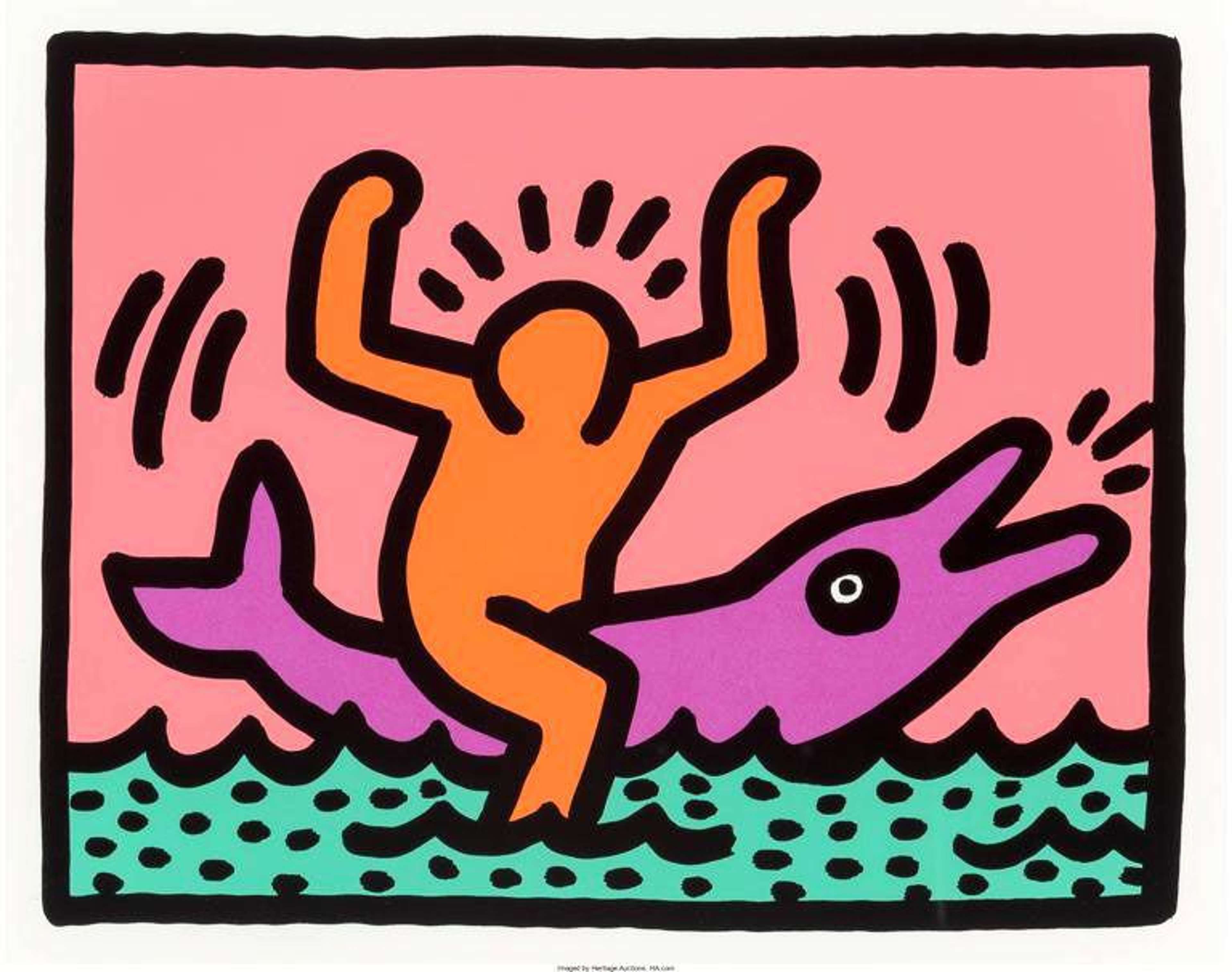Keith Haring’s Radiant Baby: A Symbol Transcending Art and Religion

 Radiant Baby © Keith Haring 1990
Radiant Baby © Keith Haring 1990
Keith Haring
250 works
Keith Haring's work, characterised by its vibrant and dynamic figures, has become a staple in the narrative of 1980s New York's art scene. Among his array of compelling symbols, the radiant baby stands out as a beacon of optimism, innovation, and profound meaning. This article seeks to explore the layers of symbolism and historical context embedded within the radiant baby, a figure that transcends the boundaries of its time to remain a significant icon in contemporary art.
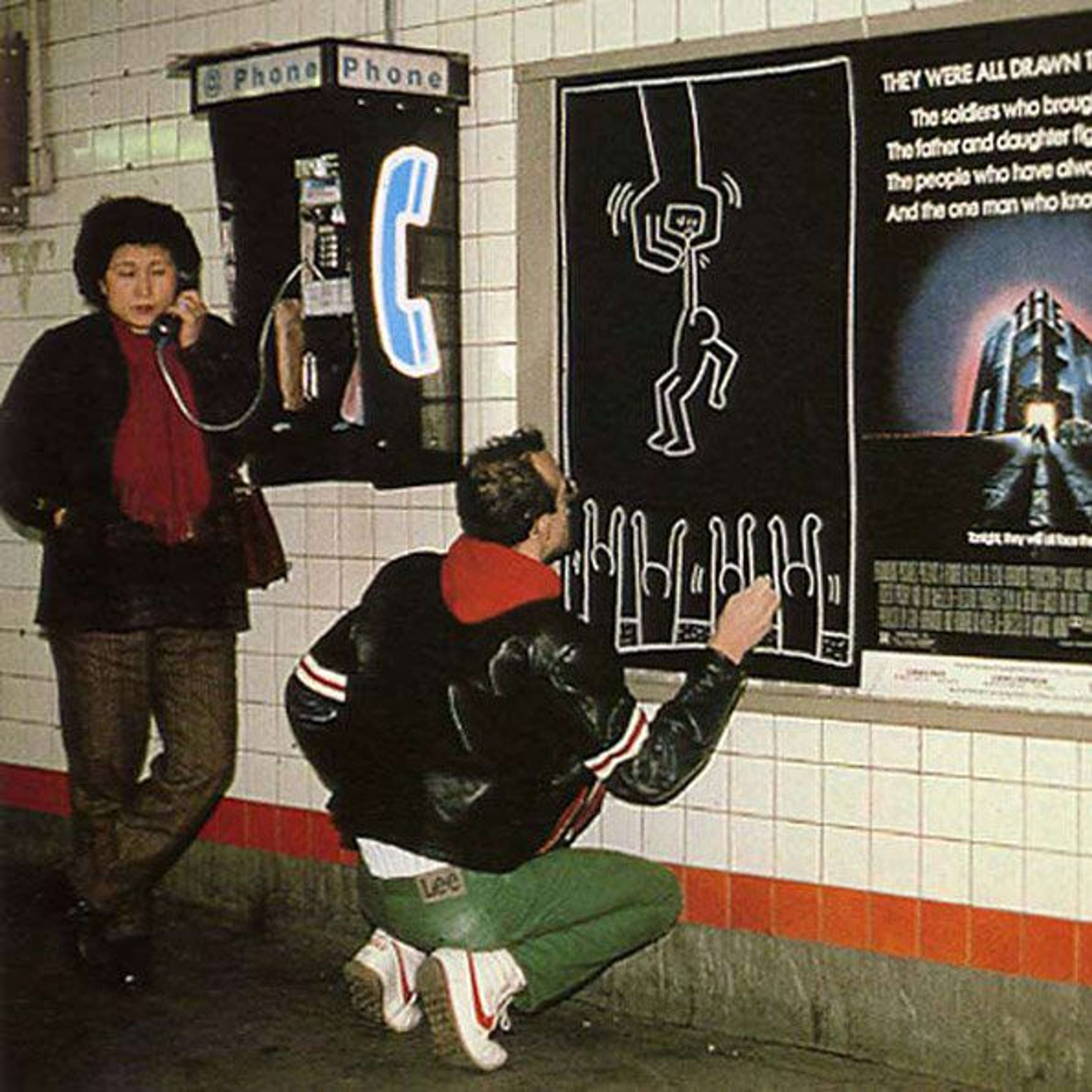 Image © Creative Commons via Flickr / Keith In The Subway
Image © Creative Commons via Flickr / Keith In The SubwayThe Emergence of the Radiant Baby
The advent of Haring's radiant baby in the New York subway system marks a pivotal moment in his career and the wider art world. This symbol, representing the purest form of human existence, originated from Haring's unique combination of street art and high art, resonating with a broad audience and embedding itself in the Downtown culture.
Bridging Street Art and High Art
Haring's emergence into the 1980s street art scene was marked by his unconventional approach to creating and displaying art. Creating his work in the subway, where the radiant baby first appeared as his tag, was a deliberate choice. It was here, amidst the daily hustle of New York City's commuters, that Haring found a vast, dynamic canvas. This setting allowed him to bring his art directly to the people, bypassing traditional gallery systems and questioning the exclusivity of the art world.
Haring's choice of location was as significant as the content of his art. The subway, a hub of urban life, offered a unique platform for Haring to engage with a broader, more diverse audience than that of typical art galleries. This interaction between art and the public sphere was revolutionary and played a critical role in blurring the lines between street art and high art.
The Radiant Baby: A Symbol of Universal Connectivity
The radiant baby, characterised by bold lines and radiant energy, is more than just an artistic motif; it's a symbol of connectivity and universality. This figure, often depicted crawling and surrounded by radiant lines, represents the essence of life and the unadulterated potential inherent in every human being. Haring's choice of a baby, a universal symbol of new beginnings and untapped potential, resonates with people regardless of their cultural or social backgrounds.
In Haring's own words, the radiant baby was “the purest and most positive experience of human existence.” This statement underscores his belief in art as a vehicle for expressing fundamental truths about humanity. The radiant baby, with its simplicity and profound symbolism, became a conduit for Haring to communicate these truths.
The Cultural Impact of the Radiant Baby
The radiant baby quickly transcended its origins in the subway to become an iconic figure in the art world and popular culture. Its widespread recognition is a testament to Haring's skill in creating imagery that is both accessible and deeply meaningful. The symbol's appeal lies in its ability to encapsulate complex ideas such as innocence, hope, and rebirth in a visually striking and straightforward manner.
Moreover, the radiant baby became synonymous with the spirit of the 1980s, a period marked by rapid social change, technological advancement, and a burgeoning awareness of global issues. Haring's ability to tap into the cultural context of the time, using art as a commentary on contemporary society, solidified the radiant child's place as a defining image of the era.
A Convergence of Simplicity and Complexity
At first glance, Haring's radiant baby appears straightforward - a simple depiction of a child encircled by radiant lines. However, this simplicity belies a deeper complexity. The multifaceted symbol serves to intertwine innocence and hope with Haring's belief in the power of art as a medium that transcends language and cultural barriers.
The Spiritual and Religious Dimensions
Keith Haring's early interactions with the Jesus Movement profoundly impacted his artistic vocabulary, embedding a spiritual dimension into his works that is vividly exemplified from the like of the Apocalypse series to his depiction of the radiant baby. This symbol, often portrayed with an emanating aura, draws a parallel to Christian iconography, especially the traditional depictions of the Christ Child. Such imagery frequents Christian art, with the halo or aura signifying divinity, purity, and a connection to God.
Haring's adoption of this motif goes beyond aesthetic appropriation. It reflects a deeper, more introspective exploration of spirituality and the human condition. In the radiant baby, Haring finds a connection between contemporary art and ancient religious themes, merging the sacred with the secular. This fusion is not an effort to promote a specific religious ideology but rather to explore the universal aspects of spirituality and its relevance in contemporary life.
The radiant child, with its glowing halo, becomes a symbol of hope, potential, and innate goodness, elements often associated with spiritual enlightenment and transcendence. This symbolism resonates across various cultures and beliefs, tapping into a collective consciousness that recognises the purity and promise represented by a child.
By weaving these spiritual elements into his work, Haring does not confine the radiant baby to a singular religious narrative. Instead, he elevates it to a more universal plane, where it becomes a symbol of general human spirituality and a mirror reflecting the intrinsic potential and innocence inherent in all people. This approach allows the radiant baby to transcend cultural and religious barriers, making it not only a signature element of Haring's art but also a symbol with profound global resonance. This universality is key to the enduring appeal and significance of the innocent motif, demonstrating Haring's unique ability to infuse his art with both personal meaning and universal relevance.
The Symbol's Evolution and Versatility
Initially a distinctive tag, radiant baby underwent an evolution as it shifted from subway art to canvas and screen print. Showcasing his adeptness in adapting the symbol across varied mediums and contexts, Haring highlighted the versatility and dynamism of his artistic message.
In each new setting, Haring re-contextualised the symbol, allowing it to speak powerfully to different audiences and scenarios. For instance, in gallery spaces, the radiant baby was no longer an ephemeral piece of street art but a focal point of artistic contemplation, inviting viewers to delve into its deeper meanings.
The adaptability of the radiant baby is evident in how it became a conduit for social commentary. Haring used it to address issues ranging from the AIDS crisis to children's rights and the anti-nuclear movement by displaying the innocent motif in a darker way. Presented with Kaposi’s sarcoma, associated with advanced HIV infection, or at the centre of a mushroom cloud or UFO abduction, Haring used the stark contrast between the subject and the context to revolutionise the artistic landscape and take an activist stance. In each instance, the radiant baby maintained its foundational themes of innocence and potential while also embodying the urgency and gravity of these societal concerns.
Moreover, Haring's use of the radiant baby challenged established norms of art's purpose and audience. He democratised art by bringing it out of exclusive galleries and into public spaces, making it accessible to a broader, more diverse audience. This approach not only broadened the reach of his work but also encouraged a reevaluation of how and where art could be experienced and by whom.
The Timeless Appeal of the Radiant Baby
The radiant child has undoubtedly become one of Haring's most recognisable icons, continuing to captivate audiences decades after its creation. Its appeal can be attributed to its multifaceted nature, embodying aspects which are universally resonant across cultures and time. Used to juxtapose tough social issues and rally alongside powerful socio-political critiques, the innocent baby resonates with an audience by offering a lens through which to view and understand the complexities of the human experience. Haring rewrote the typical narrative of a helpless infant to subvert it into a symbol of power and strength - a testament to the artist's vision.
Haring's distinctive visual style is characterised by its vibrant colours and bold, graphic imagery, instantly commanding the attention of the viewer. His 1990 screen print of Radiant Baby is testament to his cartoon-like style standing the test of time, both throughout his career and beyond, and enabling a singular motif to become a highly reproducible subject, breaking through artistic boundaries.
Haring's integration of art with social commentary, his commitment to accessibility and inclusivity, and his unique artistic style have ensured that his work, including the radiant child, remains relevant and influential. The radiant baby, as a symbol, has become emblematic of Haring's artistic legacy, continuing to inspire new generations of artists and audiences alike, and leaving an indelible mark on the art world and popular culture. This enduring impact underscores the significance of Haring's work and reaffirms the radiant baby's place as an iconic symbol in the narrative of contemporary art.


